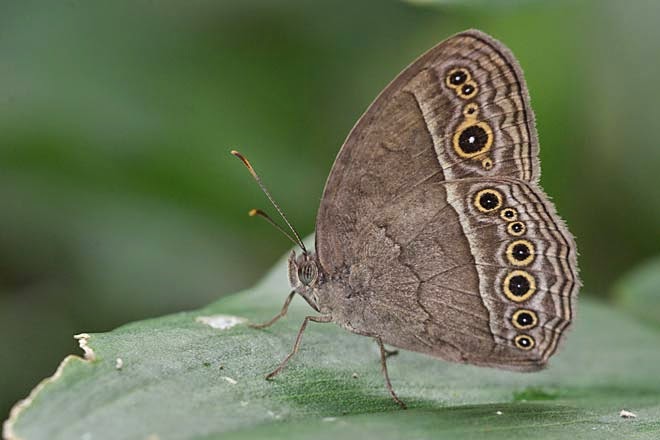I decided to check out the forested areas outside the Mandai Zoo on 31 Aug. Strolling along the Mandai Lake Road, I ventured into a few forest trails before ending my outing at Mandai Track 15.
My first instinctive shot of the morning was this skittish lycaenid which was identified by Dr Seow (from BC) as a male Nacaduba calauria malayica. Very active and demonstrating a zigzag and random flight pattern, it didn't stay still for me to take more shots.
My first instinctive shot of the morning was this skittish lycaenid which was identified by Dr Seow (from BC) as a male Nacaduba calauria malayica. Very active and demonstrating a zigzag and random flight pattern, it didn't stay still for me to take more shots.
There were quite a number of Bush Browns flitting along the reservoir edge. This is likely to be a Mycalesis perseoides perseoides.
A Banded Demon (Notocrypta paralysos varians) was zipping around from flower to flower. When it rested momentarily, I approached closer and snapped a few shots.
A Banded Demon (Notocrypta paralysos varians) was zipping around from flower to flower. When it rested momentarily, I approached closer and snapped a few shots.
A rather dark skipper was resting at one shady corner along a forest trail . With its unmarked dark hindwing, it appeared to be a male Caltoris cormasa.
Not far away from the main road, some Bidens flowers attracted quite a number skippers. This Grass Demon (Udaspes folus) was one of them foraging for nectar and occasionally taking a short break on a leaf surface.
The Detached Dart (Potanthus trachala tytleri) tends to open its wings while feeding.
I had to squeeze off a shot rapidly whenever it landed on a new flower so as to capture its underside wings.
Here is another shot.
The Silver-Forget-Me-Not (Catochrysops panormus exiguus) seems to be a permanent resident in this area.
This small orange skipper is Oriens gola pseudolus, a rather common fast flying skipper in forested areas.The Silver-Forget-Me-Not (Catochrysops panormus exiguus) seems to be a permanent resident in this area.
This is likely to be a Parnara species, a small brown skipper which didn't open its wings as frequent as some of the Pelopidas species that I have known of.
This is a female Telicota colon stinga according to Dr Seow. Identifying a Telicota species has always been a nightmare for me.
Here is another shot.
On my way back to the main gate, I tumbled over a puddling Melanitis leda leda. It took off from the ground and perched on a leaf. I approached it closer and took this shot.
Thanks Dr Seow for identifying many of the species featured here.


.jpg)












No comments:
Post a Comment